TV Station RNB
The High School Aquarium that Brought a Town Back to Life
DC281764![]()
高校生水族館 竜宮城があった町 [RNB]
![]()
![]()
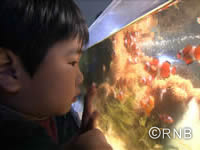
|Length : 25 |Year : 2017 |
The town of Nagahama was once home to the first aquarium in all of Shikoku, one of Japan’s four main islands. Now it is home to an aquarium run entirely by high school students. The public high school’s small aquarium opens up for public viewing once a month. With roughly 2000 aquatic animals from both the sea and rivers, the public openings always draw a big and lively crowd. The animals are cared for by the aquarium club, a rare club for Japanese schools. As the club members care for the animals, they learn many new things, and in 2015, the club placed fourth in the world’s largest student science contest. Hearing this news brought back old memories and brought a new life to the townspeople, who began holding events and collecting signatures to revive the original aquarium. The town was transformed by the young high school students and set out to revive the original aquarium.
The Sea Bream of the Inland Sea – The Splendid Cuisine of the King of Fish –
DC260004![]()
瀬戸内海鯛物語 海の王・華麗なる“食”の世界 [RNB]
![]()
![]()
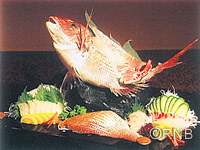
|Length : 30min. |Year : 2000 |
The sea bream has long been an essential part of many different kinds of celebratory occasions in Japan, including festivals and marriage parties. Indeed, it is often referred to as 'the king of fish'. In this documentary, we see fishermen rod-fishing in the Inland Sea, men cultivating top-quality fish, a master chef of a high-class restaurant in Tokyo creating various mouth-watering dishes, and a chef at a hot-spring inn on Shikoku Island attempting to recreate several 18th century sea bream recipes.
“The Shodo Girls!!” The High School Girls’ Koshien
DC241038![]()
ザ・書道ガールズ!!涙の180日!女子高生たちの甲子園 [RNB]
![]()
![]()
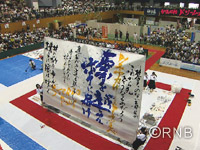
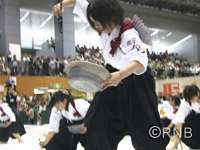
|Length : 45min. |Year : 2010 |
"Shodo Performance" -- a creative form of calligraphy in which high school girls draw characters on an oversized sheet of paper while performing routines to music. The "Shodo Performance Koshien" was first held in 2008 in the city of Shikokuchuo, Ehime Prefecture, which is known as the number one producer of paper in Japan. A group of local high school students decided to host this event in order to create publicity and revitalize their recession-hit hometown.
The movie was made based on this true story. The Shodo Girls and Shodo Performance became widely known throughout Japan by the time the third "Shodo Performance Koshien" took place on July 31st, 2010. In the first tournament only 3 schools participated and then 5 schools in the second; this time, 18 schools applied from all over the country.
The original Shodo Girls of Ehime Prefectural Mishima High School not only made their film debut in the movie but also put on a live Shodo Performance in Cannes, France where the International Film Festival was being held. The now popular Shodo Girls search for ways to make the best of the dynamic movements of calligraphy in its original form.
First-time contestant Kumamoto Prefectural Tamana High School applied in order to create one last memory with their beloved instructor, who will retire at the end of the academic year. But differences in opinion occur frequently between the 60-year old coach and the 17-year old students. The trouble continues up through the day before the tournament, when the coach instructs his students to cut a specific portion of the performance so that their presentation is completed within the time limit of 6 minutes. Team members gather in one room of the boarding house that evening, and decide to disobey him to perform the way they originally intended without telling him. They did this because they loved the coach, and wanted a chance to say 'thank you.'
3,000 spectators filled the site on the day of the tournament. The Shodo Girls are tense, feeling immense pressure. After completing the performance the Shodo Girls cry, relieved and recalling various hardships they had to overcome.
And finally, the presentation of the results. More tears fall at the tournament site -- for a variety of different reasons and sentiments.
Calligraphy Girls – The path to the championship –
DC240527![]()
書道ガールズ ~高校日本一への軌跡~ [RNB]
![]()
![]()
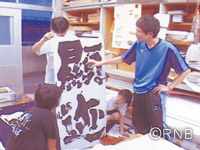
|Length : 25min. |Year : 2005 |
Teenage calligraphers energetically write out the lyrics of a Japanese pop song, using a 1-meter long brush on a huge 4-meter by 10-meter sheet of paper. This unique "calligraphy demonstration"is performed by Mishima High School calligraphy club members who won 1st prize in the 2003 National Calligraphy Competition. Calligraphy is not just a written form of communication but an ancient art reflecting the profound history and philosophy of the Orient. The girls' performance completely transforms the traditional perception of calligraphy, from a tranquil and reserved custom to a colorful and dynamic art from.
Sakura Sakura
DC231330![]()
さくらさくら [RNB]
![]()
![]()
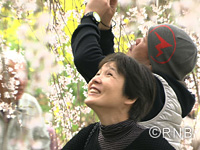
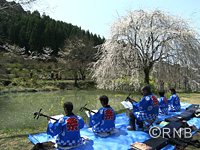
|Length : 48min. |Year : 2013 |
Aino is a village in the island of Shikoku, Japan. The only house remaining in this mountain village is of the Takezaki family, consisting of Grandpa Isamu (78), Grandma Ichiko (76) and their dog.
Spring time is here and the day the Takezakis have been waiting for all year has finally arrived. Today is the day when many visitors will come to view "Aino no Hana" (Flower of Aino), the weeping cherry tree that Grandpa Isamu planted in his youth.
The local people claim that no tree matches the beauty of this cherry tree.
The reason for this is because of its spherical dome-like shape and its beautiful reflection cast on the surrounding pond. But it's also because of the warm smile and hostility that Grandpa Isamu provides to all the visitors...
Visitors will take photos, compose a haiku, and even perform a concert of shamisen (a traditional Japanese string instrument) to embrace the beauty of the tree.
Just for one day of the year, Grandpa Isamu and Grandma Ichiko's house turns into an amusement park! It gets so crowded with visitors that a 75 year-old neighbor helps out to direct the traffic of cars outside. At night, Grandpa Isamu even lights up the tree so that the visitors can enjoy this special day until the very end.
Today is the day the cherry tree is in full bloom.
What will the special day be like this year?
This is the story of a beautiful weeping cherry tree and a couple that lives in an isolated corner of Japan.














